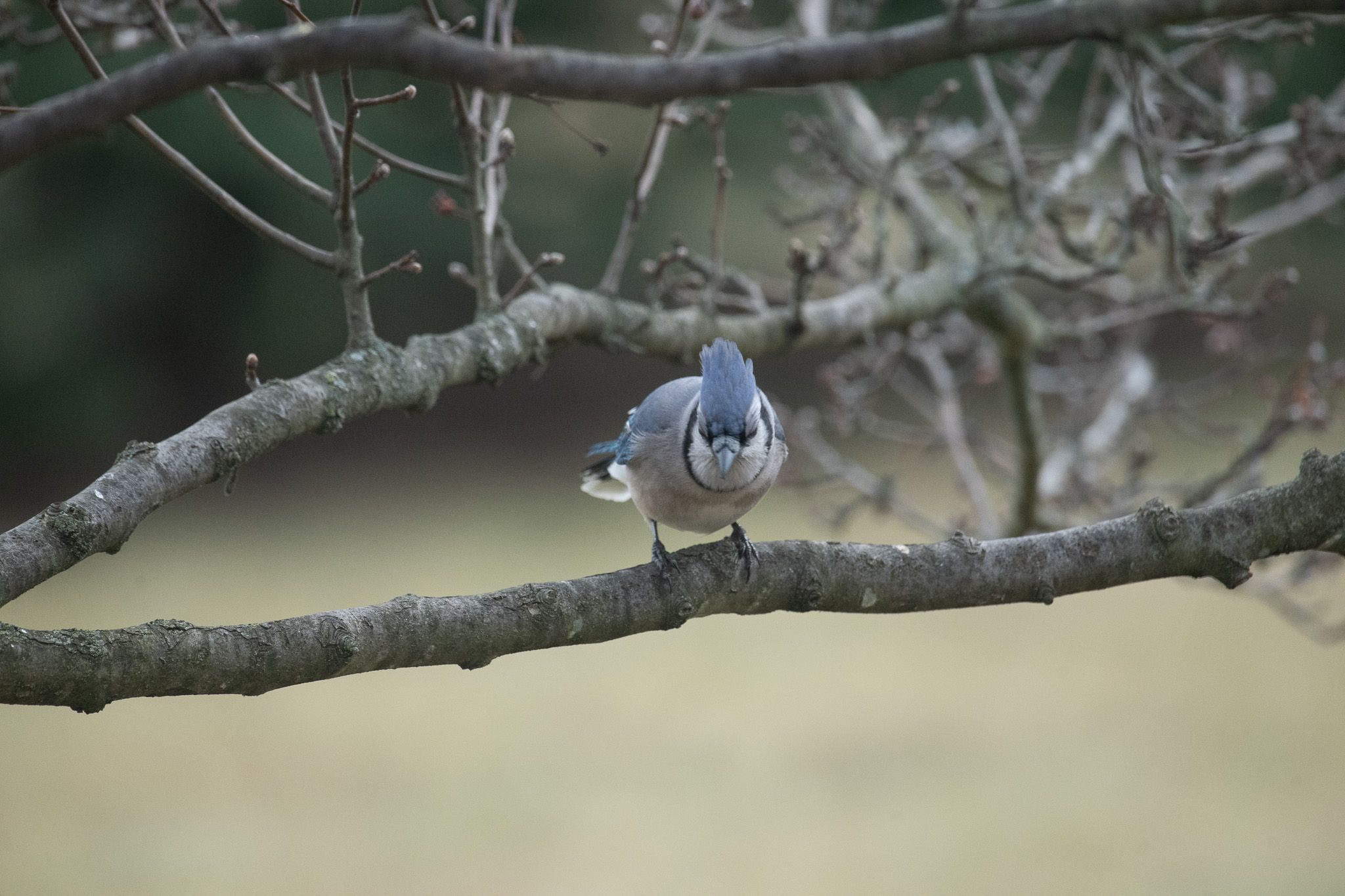
Blue Jay
Cyanocitta cristata
About the Blue Jay
The Blue Jay (Cyanocitta cristata) is a species documented in our database. Learn more about this species through the information below.
Conservation Status
Blue Jay is currently listed as Least Concern on the IUCN Red List.
Population Trend
stable
Current Threats
- Habitat loss and fragmentation
- Climate change
Photo Gallery

4 photos available
Geographic Distribution
Distribution by Region
Eastern United States
Continent: North America
Country: United States
Region: States east of the Rocky Mountains
Central United States
Continent: North America
Country: United States
Region: States in the Midwest and Great Plains
Southeastern Canada
Continent: North America
Country: Canada
Region: Provinces of Ontario and Quebec
Distribution Overview
The Blue Jay is a widespread species found in eastern and central North America, inhabiting forests, woodlands, and urban areas.
Quick Facts
- Size
- 25 - 30 cm
- Weight
- 70 - 100 g
- Lifespan
- up to 2-3 years years
- Diet
- Nuts (acorns, hazelnuts)Seeds (sunflower seeds, safflower seeds)Fruits (berries, cherries)Insects (grasshoppers, crickets)
Habitat
ForestsWoodlandsUrban areasGardens
Behavior
- Forages for food on or near the ground, using its sharp, pointed beak
- Engages in social behavior, often found in pairs or small family groups
- Known for its bold and curious nature
- Breeds in trees or shrubs, with females laying 2-5 eggs
- Both parents care for young, which leave the nest after approximately 17-21 days